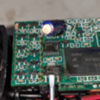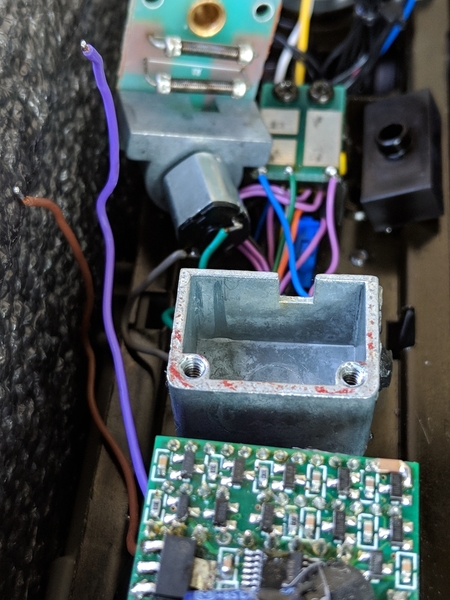OK guys, here is the update.
I received the new transistor (or transistors because they were dirt cheap) and replaced it on the board. Everything went without a hitch. Here is a picture of the final result: (Before you say anything about the hot glue LMAO, the cap was cold soldered to the board and from lifting and lowing it, it finally came loose, it was a PITA to re-solder so after I got it soldered I decided to make it a permanent fixture for the moment.)

So after this I went straight to the test track, I began by just applying track voltage but that is all. Measurements across the Gate and Source "Control Voltage" was zero and no voltage across the blue and brown "HEAT" wires (They are currently disconnected from the smoke unit until I figure this out), so far so good.
Next I "Started up" the engine with smoke "OFF" and got the same results as before (on a side note, those little grain of wheat bulbs get HOTTTTTT!! LOL) so again, so far so good.
LOL) so again, so far so good.
Now I turned on the smoke from the DCS Remote and the fan begins to turn. I get about .58V DC across G/S terminals on FET, 5V DC on FAN (DUHH its spinning, but I am being thorough. Also, for the record, STAN's pin-out diagram has been on the money) and about 4V DC across the HEAT circuit. The HEAT voltage seams to drop down to about 2V DC for a few seconds then right back up, but I figure maybe this is normal behavior to not over heat the smoke resistors (Please correct me if I am wrong.) When I increase the RPM level the voltage spikes, I saw 18V DC at moments but again, I figure this is normal as it only for brief moments and it must be to quickly heat the resistors.
Unfortunately this is where I now stand, when I momentarily touch the Blue and Brown wires to the opposite sides of the resistors with the smoke unit off and engine on, I get smoke and I shouldn't be. As of now this is what I have discovered; when I connect the blue leg only to the resistor and leave the brown disconnected, I get smoke (again with the smoke turned off, FAN is dead, and 0V DC on G/S terminals.)
I was obviously frustrated and went to bed to start fresh this morning before heading to work. The first thing that came to mind was to test continuity between the smoke resistors and the outer wall of the fluid chamber and as you might already be guessing, I have the smoking gun. The smoke elements or Smoke resistors are shorted to chassis ground via the outer metal casing of the smoke unit. How did this happen? What should I do now? Maybe just replace the gasket? with?
I am close to getting this guy 100% running and hope you gentlemen can help push me and this beautiful engine to the finish line.
P.s. if you guys are interested in seeing the voltage across the Blue and Brown wires with different RPM levels, here it is:
https://photos.app.goo.gl/tvdGjS6yuSLCaJMr8
Just maybe the video will help someone in the future.
Thanks!
















